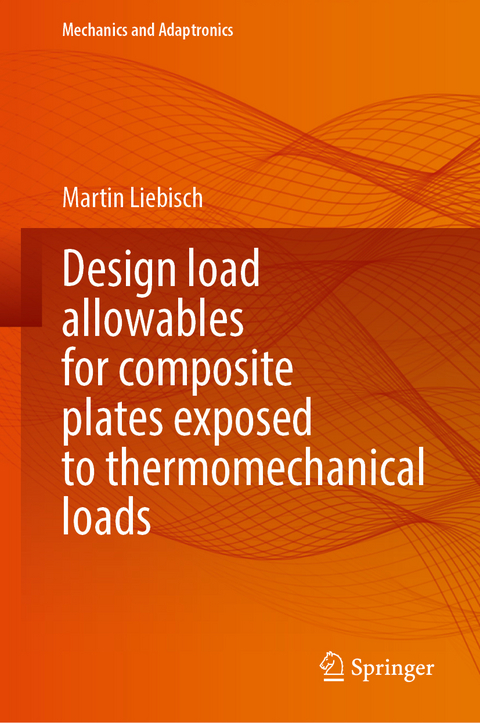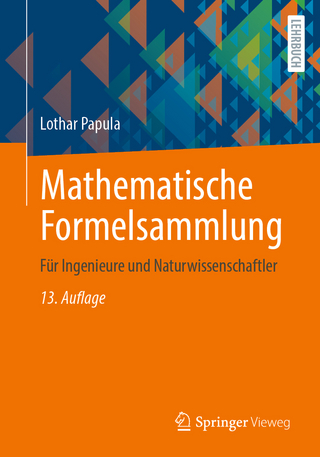
Design Load Allowables for Composite Plates Exposed to Thermomechanical Loads
Seiten
2024
Springer International Publishing (Verlag)
9783031713514 (ISBN)
Springer International Publishing (Verlag)
9783031713514 (ISBN)
Current methodologies used to design lightweight structures made of CFRP materials under static thermomechanical conditions often rely on simplified approaches. In particular, the temperature-related design case is typically described by assuming a uniform distribution of the worst-case temperature, which is the maximum allowable temperature that can occur simultaneously with the mechanical loads. However, these simplifications can lead to a weight penalty due to their over-conservatism. To address these limitations, the present work describes a novel analysis methodology that accounts for spatial distributions of temperature. This approach allows for a more detailed understanding of the structural behavior under these demanding conditions. As a result, existing load-carrying potentials can be identified and used to fully exploit the advantage of CFRP structures. Moreover, this methodology generates an improved understanding of the variability in the structural behavior under such scattering thermal conditions, which can increase confidence and reliability in the design process and lead to reduce related margins of safety. To accurately model the mechanical behavior of structures at distributed temperature conditions, it is essential to consider the temperature-dependent properties of the material. These properties describing the elastic and strength behavior of the unidirectional ply, are derived from typical material characterization performed at various temperatures. In this approach, a phenomenological model is used to account for the temperature dependence of the material. This model is fitted to the characterization results to consider the individual magnitude of the properties. The resulting property allowables contain typical material uncertainties, as well as the model uncertainty that is defined by assessing the errors between the model and measurement. To determine the stability and strength behavior of structures under different thermal conditions, Finite-Element-Analysis (FEA) is utilized. Variations of thermal load distributions are analyzed to consider the uncertainty in opertational conditions qualitatively and quantitatively. A series of such analyses is conducted at different thermal conditions to determine design values such as buckling loads or failure loads. Based on this data, surrogate modeling leads to design value formulation as a function of the temperature distribution. This approach provides a more comprehensive and reliable assessment of the structural behavior under different thermal conditions and enables to either determine more realistic worst-case behavior or enhanced design values such as probabilistic structural allowables. The final part of the thesis demonstrates the developed analysis methodology on representative skin field structures. The comparison to the common analysis procedure highlights the potentials of structural load carrying capability and reveals deficiencies in the present approach. Thus, a detailed modelling of the temperature distribution leads additionally to an improved reliability of the design process and more efficient and robust structures.
Martin Liebisch is working at the German Aerospace Center (DLR) since 2014. His work was initially focusing the analysis of composite curing analysis. Later his scope changed to the topic of thermomechanical analysis and the behavior of composites under fire exposure. Further work focuses on numerical and experimental investigation of hydrogen storage vessels.
Introduction.- Problem description and focus of investigation.- Characterization of composite properties at different temperatures.- Modelling of temperature dependent composite properties.- Methods for analysis at distributed temperatures.- Structural Analysis and Assessment.- Summary.
| Erscheinungsdatum | 01.12.2024 |
|---|---|
| Reihe/Serie | Mechanics and Adaptronics |
| Zusatzinfo | XVIII, 200 p. 129 illus., 117 illus. in color. |
| Verlagsort | Cham |
| Sprache | englisch |
| Maße | 155 x 235 mm |
| Themenwelt | Mathematik / Informatik ► Mathematik ► Angewandte Mathematik |
| Technik ► Maschinenbau | |
| Schlagworte | Carbon fiber reinforced polymers • Lightweight composite structures • material modelling • probabilistic analysis • Surrogate Modelling • temperature distribution |
| ISBN-13 | 9783031713514 / 9783031713514 |
| Zustand | Neuware |
| Informationen gemäß Produktsicherheitsverordnung (GPSR) | |
| Haben Sie eine Frage zum Produkt? |
Mehr entdecken
aus dem Bereich
aus dem Bereich
für Ingenieure und Naturwissenschaftler
Buch | Softcover (2024)
Springer Vieweg (Verlag)
CHF 48,95
Buch | Softcover (2025)
Springer Vieweg (Verlag)
CHF 62,95
Buch | Softcover (2025)
Springer Fachmedien Wiesbaden (Verlag)
CHF 69,95


